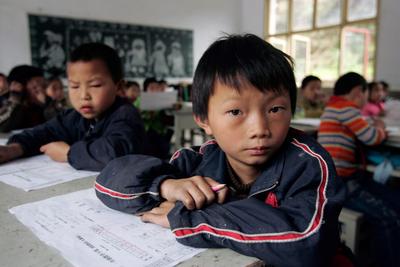First, a pattern of diversity and unity should be adopted for the education of China’s nationalities. In multicultural education and practice, Western countries have developed different patterns, which can be divided into two categories. The first is that of integration and diversification, which coordinates ethnic and cultural differences, eliminates cultural barriers, and respects the cultural particularities of minority nationalities. The other is the pattern of cultural coexistence, which lays stress on the independent value and status of different cultures through education, while the internal relations among these cultures are largely ignored.
In China’s long history, there has been a great deal of interaction between different minority nationalities via cultural transmission and cultural communication between them. A particular cultural perspective has developed as a result — ‘we are among you and you are among us’. Not only has the dominant national culture absorbed aspects of ethnic minority cultures, but the cultures of ethnic minorities have also absorbed elements of the main national culture. In the big multi-ethnic country family, a ‘cultural community’ has formed which is characterised by the coexistence of multiple national cultures. Well known Chinese sociologist Fei Xiaotong calls this ‘the pattern of diversity and unity’.
In promoting culturally sensitive education, the government should not only emphasise the special value and position of minority group cultures, but also consider the close relationship between those cultures and the culture of Han Chinese. In promoting united Han culture, China must take care to leave a position for each minority group and strengthen communication and integration among different cultures.
There is scope to broaden the character of education for minority nationalities and to cultivate students’ adaptability and understanding. The provision of special education services for minority cultures in China is a traditional academic concept. In a multicultural context, members of the majority Han nationality and minority nationalities need to learn about each other’s cultures, and all of China’s nationalities should be included in nationality education and research.
To cultivate their adaptability and understanding, students should be guided towards ‘cultural awareness’. This is a long and difficult process. Students should not only be taught to recognise their own culture, but also to understand the other cultures they encounter. This will lead to mutual understanding and mutual respect between cultural groups.
Bilingual education is the most important means by which to cultivate students’ adaptability and understanding of other cultures. It allows students to understand the perspectives of people belonging to other cultures. It can help them to effectively receive cultural information and cultivate cross-cultural communication skills. Bilingual education can provide students with a perceptual awareness of different cultures, help them to recognise language codes and cultures connected to their own, as well as strengthen individuals’ awareness of their multicultural identity.
At present, most textbooks for minority cultures are translated versions of Chinese textbooks. That is to say, the language codes of ethnic minorities are not consistent with the cultural content these books express. The government should introduce the idea of coexistence of multiple cultures. It should seek to eliminate prejudices against minority ethnic groups and their cultures, and strengthen students’ sense of cultural dignity and self-confidence.
Furthermore, teachers should develop multicultural educational viewpoints, and multi-cultural education should be pursued in general education. Teachers’ attitudes are very important throughout the process of education, and they should try to avoid being influenced by prevalent attitudes towards assimilation or by feelings of cultural prejudice. They should pay attention to their own words and deeds in the teaching process. It is also important for them to familiarise themselves with students’ family backgrounds, personalities, hobbies and ways of thinking, and regularly communicate with students and provide assistance when needed.
Qualified teachers are essential to improving the quality of bilingual education. So it is important to improve development programs for bilingual teachers. Besides having fluency in two languages and possessing high competence in thinking and knowledge, bilingual teachers should also understand the unique thinking and skills of minority cultures in addition to those of the Han Chinese. Where possible, they should have expertise in linguistics, psychology, and education. They should understand their own national culture as well as be devoted to the language and culture of other minority ethnic groups.
In short, education for Chinese minority nationalities needs reform and promotion. Reform should adapt to the overall needs of society as well as the needs of different cultures. Only in this way can different Chinese cultures coexist and develop together harmoniously.
Liu Lili is Associate Professor with the Department of Culture and History at the Chinese Central Party School in Beijing.


Very interesting thoughts to hear from CCPS. I’ve asked similar questions about religion at SARA, on whether or not efforts are being made for mutual understanding between religious and non-religious. The response was that the religious should understand the atheists but not in the opposite direction.
So it is wonderful to hear someone saying not only do minorities need to understand Han culture, but Han need to understand minority culture.
I found the article very didactic. Perhaps it was meant to be so? Nevertheless, I would have very much liked if the author had begun by laying out the situation of minority education in China as it exists currently. It is without doubt a contested subject, therefore, some contextualisation would have been helpful to set the tone. Accordingly, then she could have gone on to base her suggestions and recommendations for a path to unity with diversity. Without a comparative yardstick to assess the current situation, it becomes rather tricky for a reader to understand the essence of what the author is moving towards. What is the purpose behind stressing ‘a path to’ unity with diversity? Does it not exist already? Why the need to do so? etc.. Thanks.